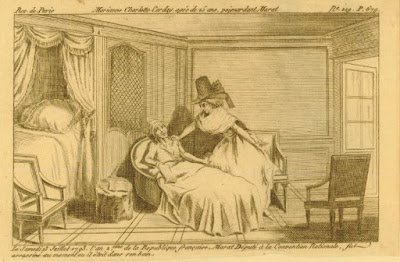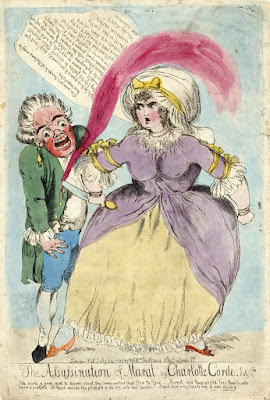Elena was a Venetian who, in 1678, was the first woman to receive her PhD. Her doctorate was in Philosophy as her true love, Theology was deemed inappropriate for woman - baby steps toward progress, I suppose. She was awarded it at the age of 32 which I personally think an excellent age to gain a PhD *wink*. Elena's successes has made me wonder about female academics in the age of Enlightenment, though. Sadly, sexism and gender division was still rampant during the so-called Age of Enlightenment and that unfortunately didn't produce many female academics. However, that did mean the few to come out of the eighteenth century, were exceptional women indeed.
 Dr Laura Bassi, was another Italian woman who earned her PhD in 1732. Unlike Elena, Laura was interested in the Sciences, more specifically, Physics. She defended her thesis at the age of 20 (!), becoming the second woman to hold a doctorate, 54 years after Elena. She devoted much of her academic career to spreading the study of Newtonian mechanics to Italy. In 1776, at the age of 65, she applied and was appointed to the chair in
experimental physics by the Bologna Institute of Sciences, making her the first woman to earn a professorship. Perhaps the best part: her
supportive husband, who also had his doctorate, became her teaching assistant.
Dr Laura Bassi, was another Italian woman who earned her PhD in 1732. Unlike Elena, Laura was interested in the Sciences, more specifically, Physics. She defended her thesis at the age of 20 (!), becoming the second woman to hold a doctorate, 54 years after Elena. She devoted much of her academic career to spreading the study of Newtonian mechanics to Italy. In 1776, at the age of 65, she applied and was appointed to the chair in
experimental physics by the Bologna Institute of Sciences, making her the first woman to earn a professorship. Perhaps the best part: her
supportive husband, who also had his doctorate, became her teaching assistant.The mathematician, Maria Gaetana Agnesi, like Laura Bassi, would also be elected to a chair. In 1750 she became a professor of mathematics,natural philosophy, and physics at the University of Bologna which was apparently a very forward-thinking university in the eighteenth century. Maria was an amazing mathematician, the likes of which I could never convey as someone who struggles with basic arithmetics.
If you're not Italian and starting to feel ashamed for your country of origins' historic lack of female empowerment in academia, have no fear, there is one more female academic. Oh wait...she's Italian too.





